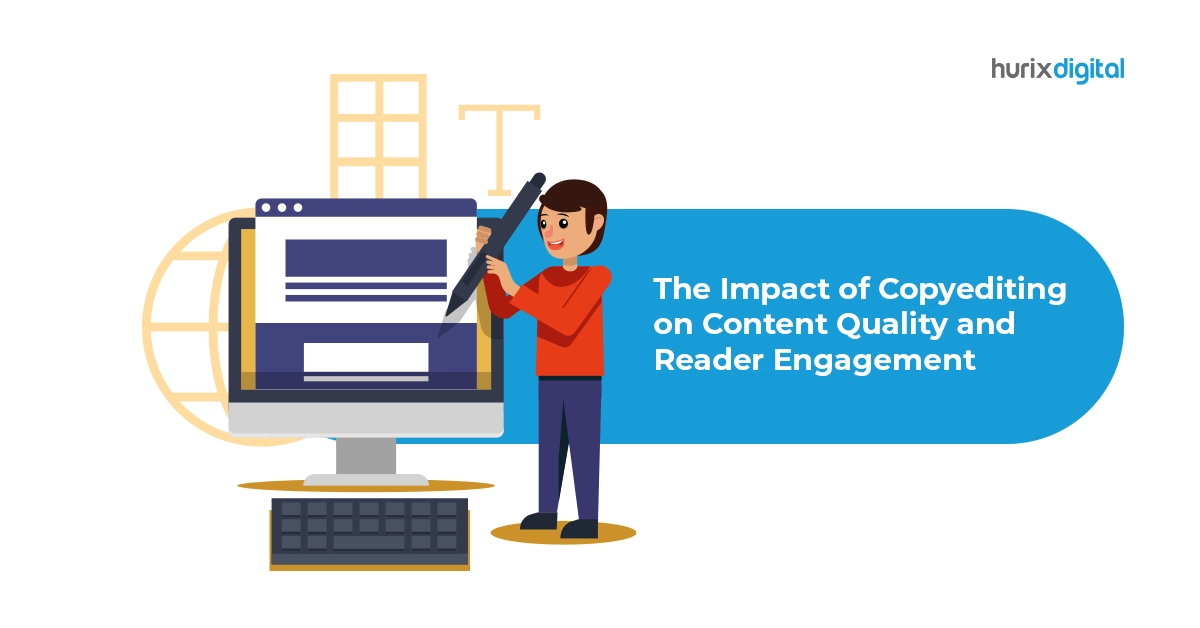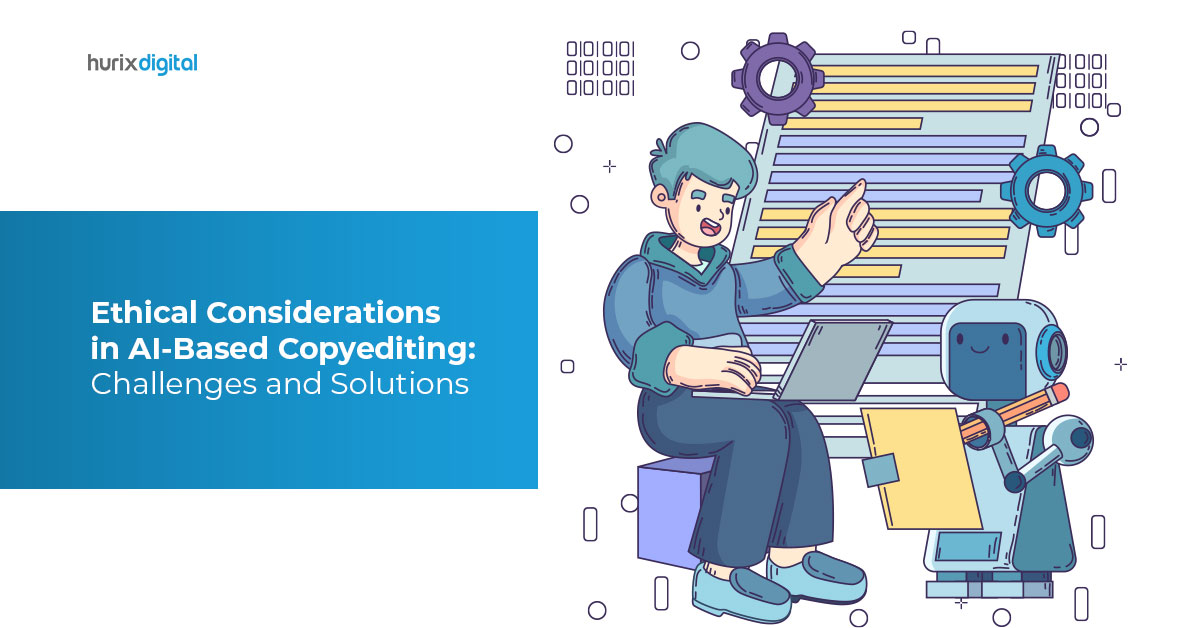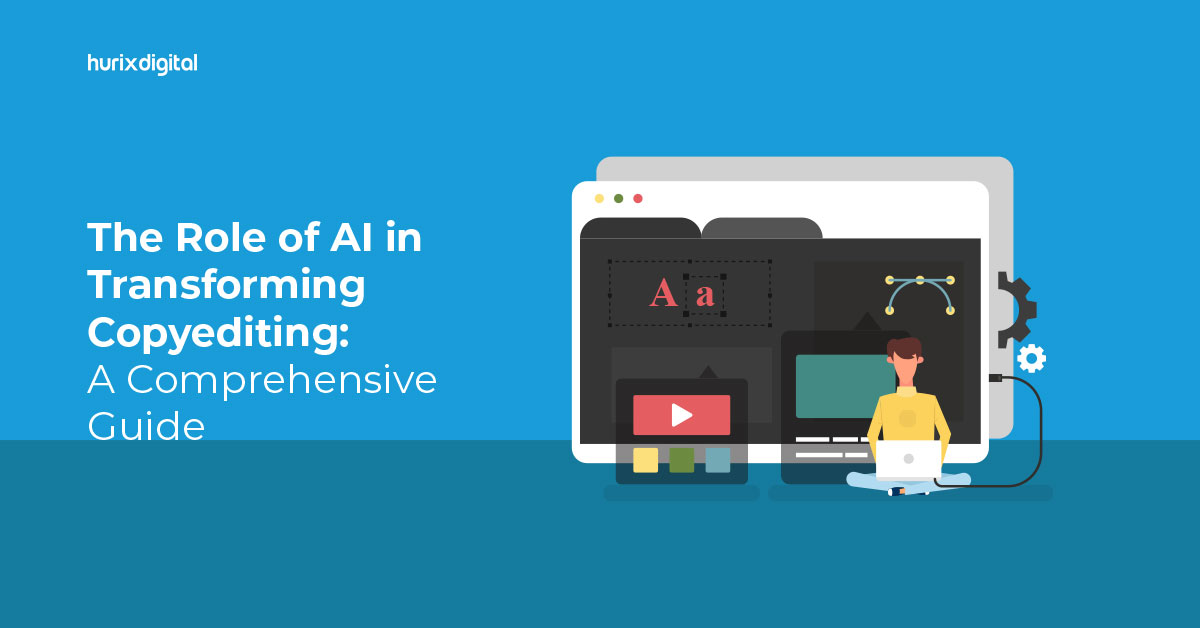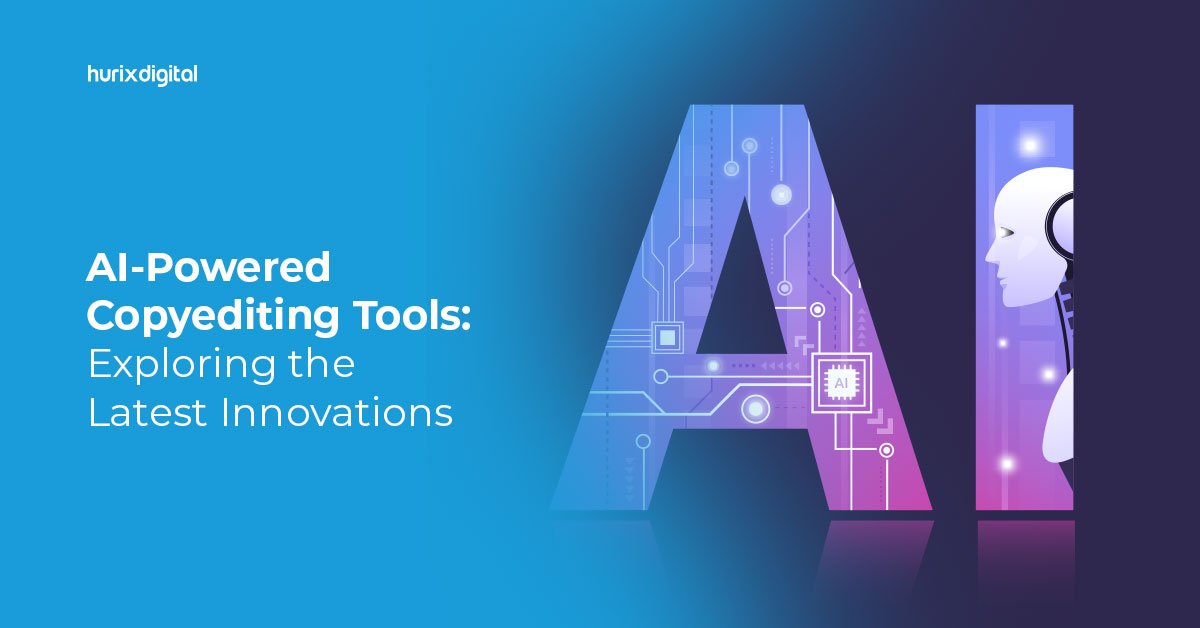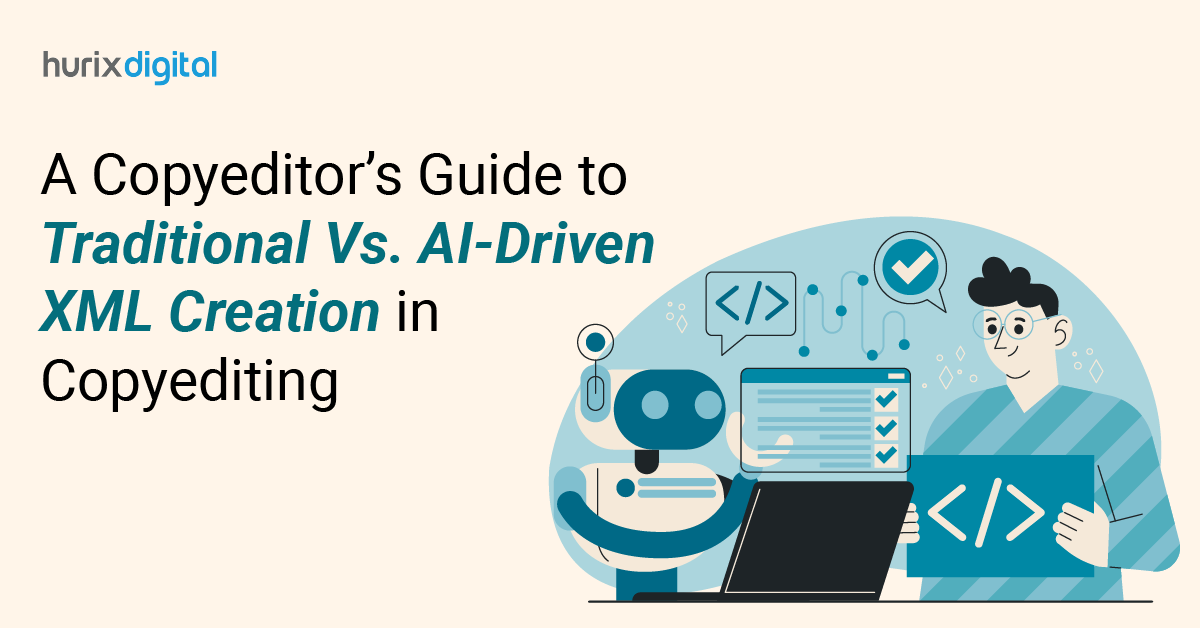
A Copyeditor’s Guide to Traditional Vs. AI-Driven XML Creation in Copyediting
Summary
This blog compares traditional and AI-powered copyediting, highlighting their pros and cons. It suggests combining both for optimal workflow, as AI improves speed but human judgment is essential.
The methodology of copyediting cannot stay put due to the growing demands on the quality and quickness of the job. Most heads of content and chief editors would agree that it is quite difficult to uphold editorial standards when dealing with so much content.
On this note, AI-enhanced copyediting represents an innovative approach that integrates tools like XML editing functions and advanced grammatical checks, among others.
In most cases, traditional copyediting is a painstaking and time-consuming affair, while in most cases, AI-based systems are faster and more scalable using natural language processing systems to ensure consistency and correctness.
In this post, we will present AI-assisted copy-editing and traditional copy-editing detailing the merits and demerits with content goals to help you choose the best strategy.
Table of Contents:
- Traditional Copyediting Uncovered: The Process and Its Perks
- Why Tradition Still Matters (But Comes with a Catch)
- What is AI-Powered Copyediting?
- Key Benefits of AI-Powered Copyediting
- Traditional vs. AI-Powered Copyediting
- Final Words
Traditional Copyediting Uncovered: The Process and Its Perks
Traditional copyediting is a hands-on, meticulous process led by skilled editors who go line by line, scrutinizing every word for grammar, clarity, style consistency, etc.
As mentioned above, this approach is rooted in a deep, human-driven understanding of context, tone, and audience.
Traditional copyediting often also includes manual XML transformation, where editors carefully tag content for structured data formats, which is essential for XML publishing. Step-by-step content tagging is needed for easier content distribution across digital platforms, especially useful in academic and scientific publishing.
Why Tradition Still Matters (But Comes with a Catch)
One of the strongest assets of traditional copyediting is its capacity for context. Editors can interpret nuanced language, adapt content to fit the publication’s voice, and make choices that resonate with the audience on a personal level. Human editors can capture subtlety and tone, qualities that are especially valuable for creative content.
However, there’s a trade-off. Traditional copyediting services can be both time-intensive and difficult to scale. High-volume projects demand hours of focused attention, and under tight deadlines, even the best editors risk occasional human error.
So, while traditional methods excel in producing polished, context-rich content, they often struggle with the speed and scalability that today’s digital publishing world demands.
Also Read: 6 Best Practices for Choosing a Copyediting Service for Multilingual Content
What is AI-Powered Copyediting?
AI-powered copyediting tools use advanced algorithms, NLP, and machine learning to automate many editorial tasks traditionally done by hand. Unlike human editing, which requires manual review, AI-driven tools can quickly tackle repetitive or rule-based corrections such as grammar, punctuation, formatting, etc., with great speed and accuracy.
AI-powered tools like Jasper and QuillBot excel at handling large volumes of text, analyzing context, and applying language rules at lightning speed. These tools identify tone, detect stylistic inconsistencies, and suggest context-appropriate phrasing, adapting to various content types and audiences.
The best part is that machine learning further enhances these tools by learning from each edit and becoming increasingly precise over time.
Key Benefits of AI-Powered Copyediting
AI-powered copyediting offers a range of substantial benefits that are transforming editorial workflows. Key benefits include:
1. Efficiency and Speed
Time is crucial in the world of content. AI tools help editors cut down on the time spent fixing grammar, punctuation, or rewording sentences. Instead of hours of manual editing, AI can spot errors and suggest improvements in seconds. All this leads to faster turnaround times, which eventually allow teams to meet deadlines without sacrificing quality.
2. Consistency and Accuracy
AI doesn’t get tired, and that’s a huge perk. It ensures that the same rules are applied consistently across hundreds or even thousands of pages. While humans might overlook a tiny detail after hours of editing, AI-powered tools stick to the script and minimize mistakes.
3. Scalability for High-Volume Content
For big publishers or agencies dealing with massive amounts of content, AI is a lifesaver. It can handle bulk editing tasks without missing a beat. Take XML publishing, for example. AI tools can organize the XML transformation process by automating the tagging, making it much easier to publish content across various digital platforms.
Traditional vs. AI-Powered Copyediting
The table below provides a detailed look at the key differences between traditional and AI-powered copyediting:
| Feature | Traditional Copyediting | AI-Powered Copyediting |
| Speed and Efficiency | Time-consuming process. Each piece of content is manually reviewed, which can slow down turnaround times. | Extremely fast. AI tools can scan and edit large amounts of content in seconds, reducing turnaround times significantly. |
| Accuracy | High accuracy when executed by experienced editors, but human errors can creep in, particularly during repetitive tasks. | Very accurate for repetitive tasks like grammar checks, punctuation, and style adherence. However, they may occasionally miss subtle errors that require human judgment. |
| Scalability | Difficult to scale. Handling large volumes of content requires multiple editors and is time-intensive. | Highly scalable. AI can handle vast amounts of content at once, making it ideal for high-volume work. |
| Cost | Often more expensive due to the time and expertise required from human editors. Costs increase with content volume. | Cost-effective for high-volume projects as AI tools typically require a one-time investment or subscription and can handle large workloads at scale. |
| Adaptability | Extremely adaptable for complex, creative work where context and subjective decisions are key. Editors can adjust to any style, tone, or niche. | While adaptable to different guidelines, AI can struggle with creative or non-standard content. It is best for routine, structured tasks. |
| Handling of XML and Digital Content | Manual tagging and formatting of content for XML publishing or digital platforms. Time-consuming and prone to human error. | AI tools can automate XML tagging and content transformation for better content distribution. |
Also Read: Ethical Considerations in AI-Based Copyediting: Challenges and Solutions
Final Words
Although AI-powered copyediting has many advantages, it’s crucial to keep in mind that it’s only a tool and not a comprehensive solution.
AI systems, despite their impressive speed, sometimes struggle with the subtleties of context or irony, and they can’t fully grasp cultural or emotional undertones the way a human editor can.
One key limitation is the potential for “hallucinations”—when the AI generates information or makes editorial choices that are simply inaccurate or nonsensical. While these errors are becoming less frequent, they still require careful oversight.
So, what’s an ideal copyediting workflow should look like?
AI should be viewed as a powerful assistant that complements skilled editors to improve consistency and productivity. The ideal workflow combines the best of both worlds: the speed and scalability of AI with the nuanced expertise of a human editor.
Hurix Digital‘s AI-powered copyediting and digital transformation services can help you create seamless content solutions.
We offer a full suite of services, including the conversion of scanned images, PDFs, Word documents, Excel spreadsheets, and PowerPoint presentations. With a commitment to precision, our solutions are tailored to meet your specific requirements, ensuring that your documents are converted to your exact specifications. Want to learn more? Our team is ready to assist you.

Vice President – Digital Content Transformation. He is PMP, CSM, and CPACC certified and has 20+ years of experience in Project Management, Delivery Management, and managing the Offshore Development Centre (ODC).
